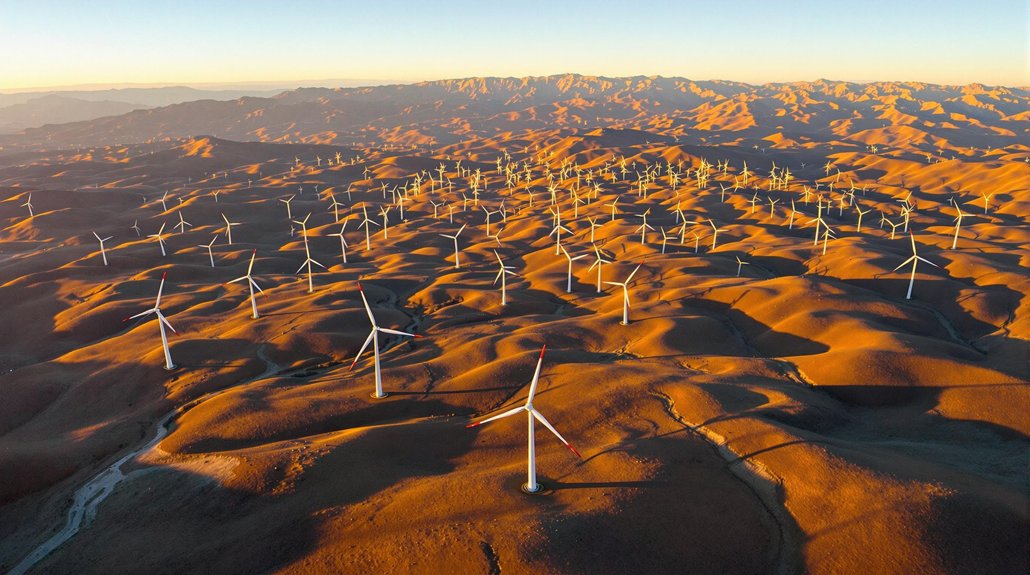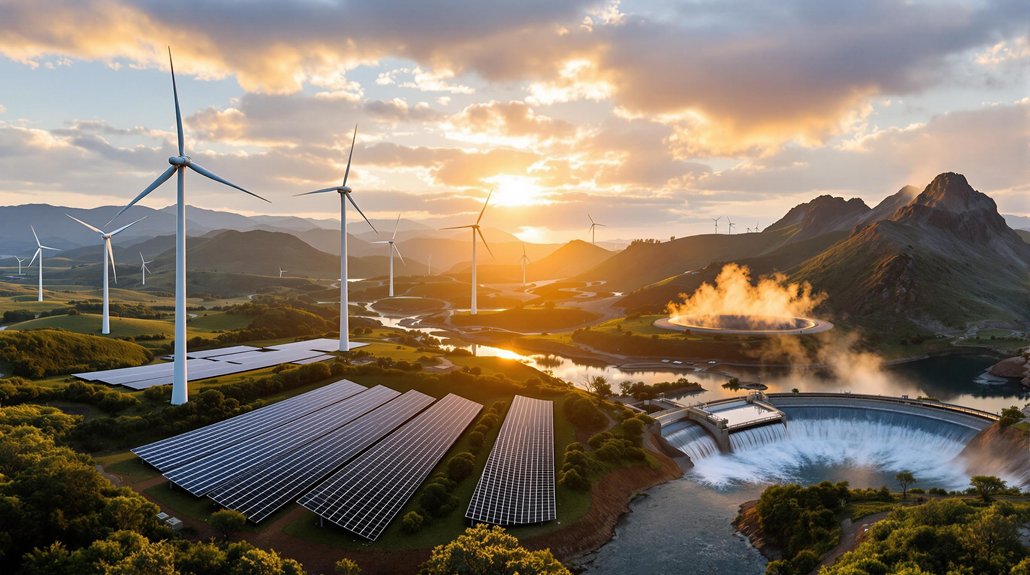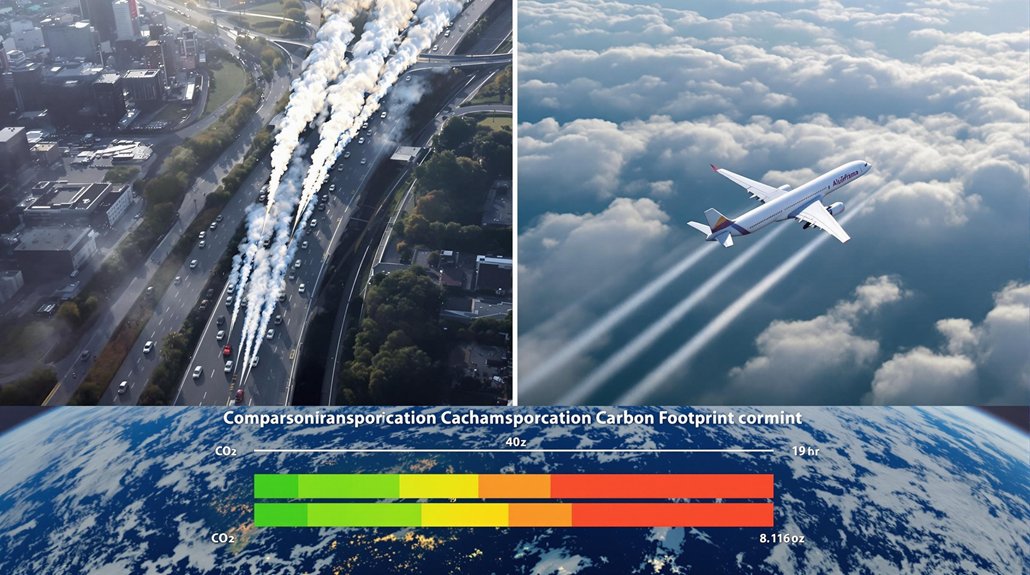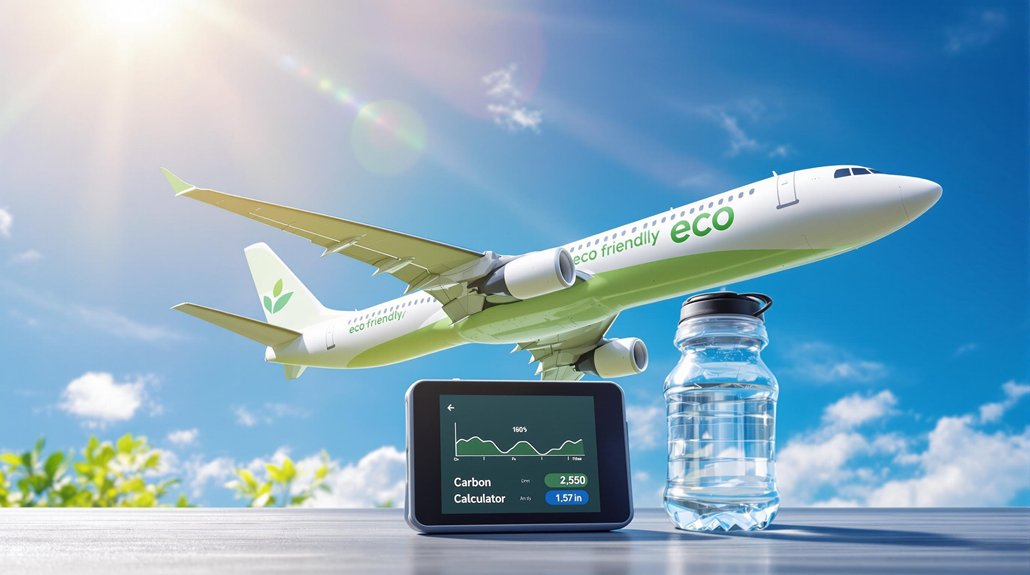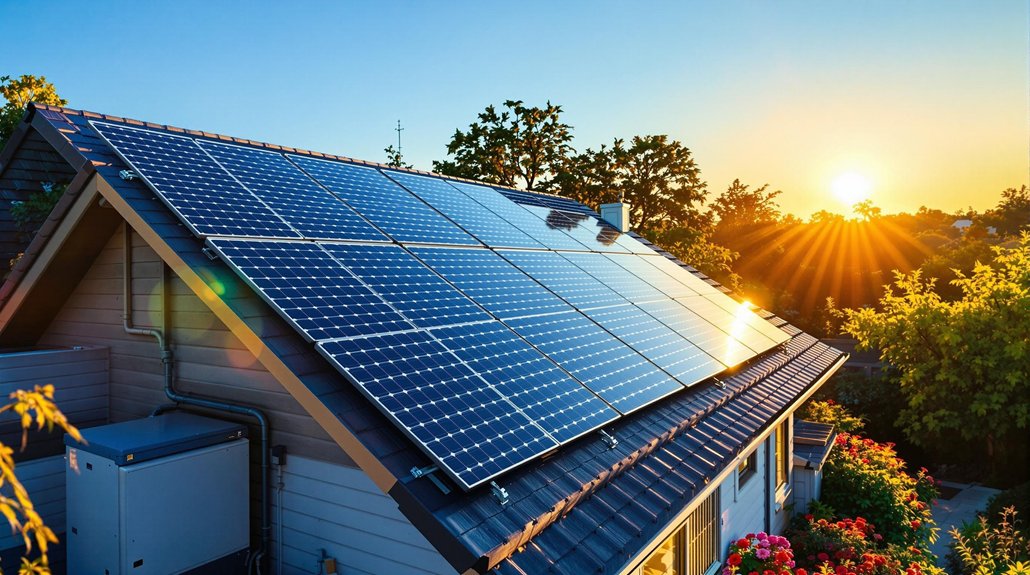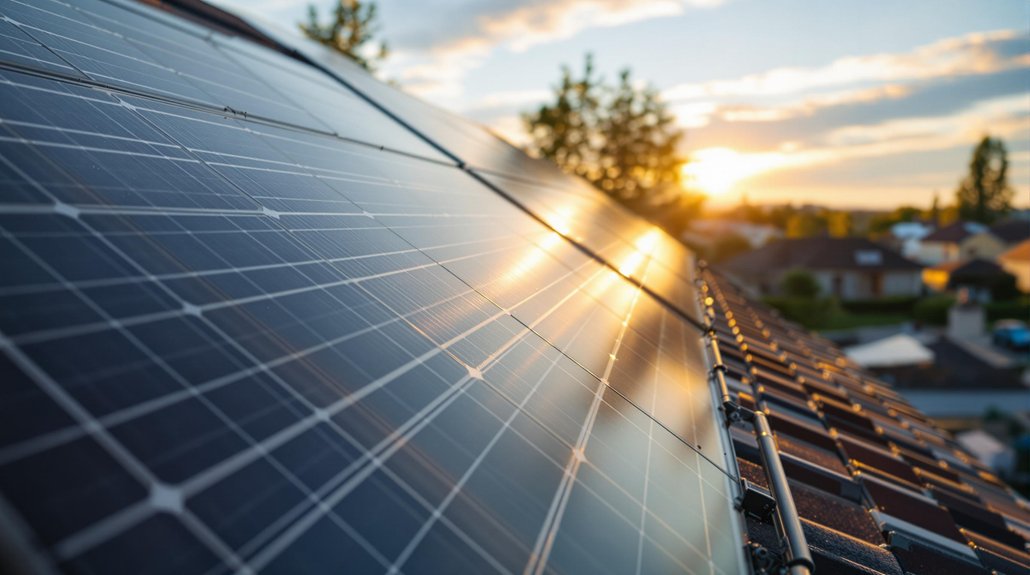The Alta Wind Energy Center in California’s Tehachapi Mountains is America’s largest wind farm. Built between 2010-2013, it spans 3,200 acres and produces over 1,500 megawatts of electricity—enough to power 450,000 homes. This $2.9 billion project has created hundreds of jobs and will reduce CO2 emissions by 52 million metric tons over its lifetime. It’s a key part of California’s plan to reach 100% clean energy by 2045.
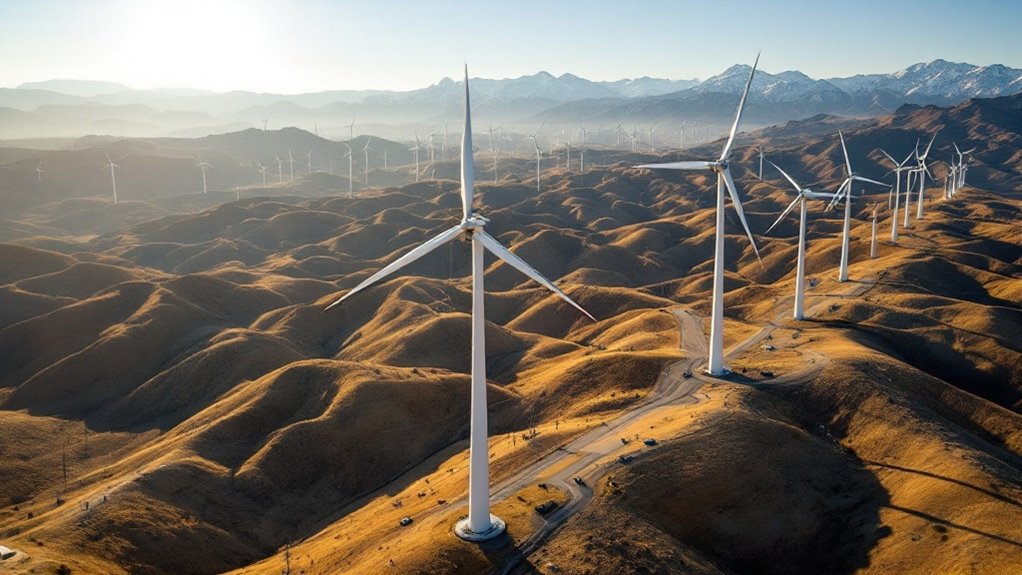
The giant Alta Wind Energy Center stands as a clean energy powerhouse in California’s Tehachapi Mountains. Located in Kern County about 100 miles north of Los Angeles, it’s the largest wind farm in the United States and the third-largest onshore wind farm worldwide. Spanning over 3,200 acres at altitudes between 3,000 and 6,000 feet above sea level, the center harnesses strong mountain winds to generate renewable electricity.
The facility boasts an impressive installed capacity exceeding 1,500 megawatts, enough to power 450,000 homes. It produces roughly 760 gigawatt-hours of electricity each year while reducing carbon dioxide emissions by 5.2 million metric tons over 25 years. That’s equivalent to taking 446,000 cars off the road. The project is expected to reduce CO2 pollution by over 52 million metric tons throughout its operational lifetime.
Construction of the Alta Wind Energy Center began in 2010 and continued through 2013, with Terra-Gen Power leading the development. The $2.9 billion project now has multiple owners and uses both GE and Vestas wind turbines of various capacities ranging from 1.5 to 3.0 megawatts.
The wind farm connects to Southern California Edison‘s Tehachapi Renewable Transmission Project and uses advanced SCADA systems to monitor and control operations. It features a mix of overhead and underground transmission lines to transport the electricity it generates. As a renewable energy source, the facility helps California reduce its dependency on fossil fuels while conserving precious water resources that would otherwise be consumed by conventional power plants. The project attracted significant international financing, including a $646 million loan guaranteed by the Export-Import Bank of the United States.
Beyond environmental benefits, the center brings economic advantages to the region. It created over 275 construction jobs and maintains 15 permanent positions. Kern County receives significant tax revenue from the project, while landowners will get an estimated $50 million in payments over the project’s lifetime.
Despite initial permitting challenges and ongoing concerns about visual impact and noise, the Alta Wind Energy Center plays a vital role in California’s plan to achieve 100% clean energy by 2045. There’s even potential for future expansion to reach 3,000 megawatts capacity and possible integration with energy storage systems to improve grid stability.
The project serves as a model for large-scale wind energy development nationwide.
Frequently Asked Questions
How Does Alta Wind Impact Local Wildlife Populations?
Alta Wind impacts local wildlife in several ways. Raptors, especially golden eagles, face collision risks with over 1,000 killed annually.
Bats suffer from both collisions and barotrauma near turbines. The facility causes habitat fragmentation affecting desert species like tortoises by creating barriers between breeding areas.
Mitigation efforts include a Bird and Bat Conservation Strategy, radar monitoring, selective turbine curtailment, and habitat restoration projects.
What Job Opportunities Are Available at the Energy Center?
The Alta Wind Energy Center offers diverse job opportunities.
Wind turbine technicians maintain and repair turbines, earning $52,000-$80,000 annually.
Operations staff monitor performance and coordinate maintenance for $60,000-$90,000.
Engineering roles involve design and technology development, paying $70,000-$120,000.
Administrative positions handle human resources, accounting, and community relations with salaries between $45,000-$85,000.
These jobs require various skill levels and provide stable employment in the renewable energy sector.
How Does the Center Handle Energy Storage Challenges?
The center tackles energy storage challenges with its 150 MW, 1,200 MWh Battery Energy Storage System.
This system uses lithium-ion batteries housed in climate-controlled containers with gas fire suppression for safety. It helps balance the grid when wind power fluctuates, reducing energy curtailment.
The center’s also exploring alternatives beyond lithium-ion batteries, including thermal storage options, to support California’s clean energy goals for 2045.
What Is the Lifespan of the Turbines Used?
Wind turbines typically last 20-30 years. The turbines at Alta Wind Energy Center aren’t exceptions.
They’re designed with a 20-25 year lifespan but can operate longer with proper maintenance. Environmental factors like California’s climate affect durability.
The center’s maintenance team regularly inspects and repairs components to maximize longevity.
When turbines reach end-of-life, about 85-95% of their materials can be recycled, though blade recycling remains challenging.
How Does Extreme Weather Affect the Center’s Operations?
Extreme weather greatly impacts wind energy operations. High winds can trigger automatic turbine shutdowns, while low wind periods reduce power generation.
Precipitation creates challenges too – ice accumulation on blades causes imbalance issues, and lightning may damage electrical systems.
Heat waves decrease turbine efficiency due to lower air density. Dust storms abrade components and reduce blade performance.
These weather events often require additional maintenance and can decrease energy production.
